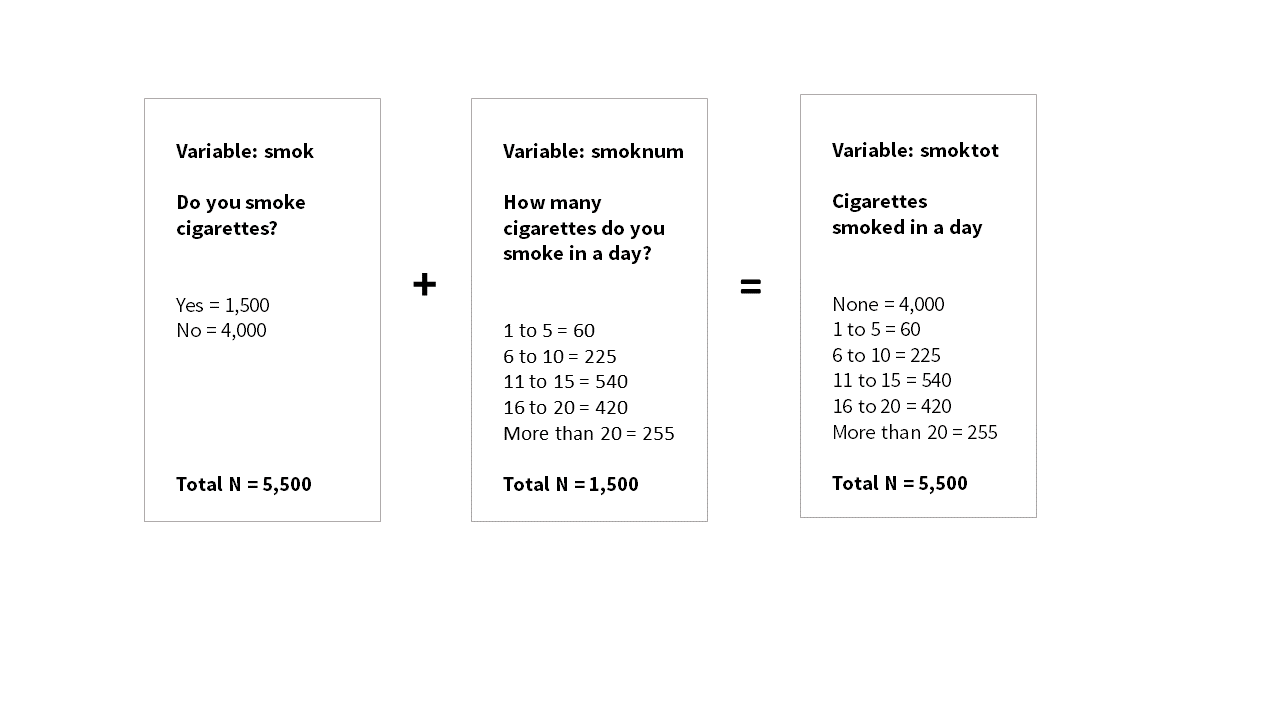Understanding your data
Once you access your data, it is important to look through the documentation and data so you can fully understand the data, including its structure, limitations, potential biases and any other features that may affect your analysis.
Some key considerations that are specifically relevant to longitudinal population studies are outlined below.
UK Data Service: Weights in social surveys
Question routing
Some survey questions are only presented to a sub-sample of the study members because they are not relevant for the whole sample. Information about the routing of questions can be found in the documentation for a specific questionnaire or interview.
It is important to check whether the questions and variables you are interested in have been routed, which means they are only answered by a sub-sample. If they are, you may need to use other variables alongside your variable of interest to fully capture the whole sample.
Example
For example, if someone answers “yes” to “Do you smoke cigarettes?”, they may be asked some follow-up questions, such as the type of cigarettes they smoke or how many cigarettes they smoke in a day. However, anyone who responded “no” to the original question won’t be asked the follow-up questions which would be irrelevant.
In this scenario, to capture the whole sample in one variable about quantity of cigarettes smoked, you would need to combine the original question and follow-up question:


